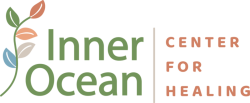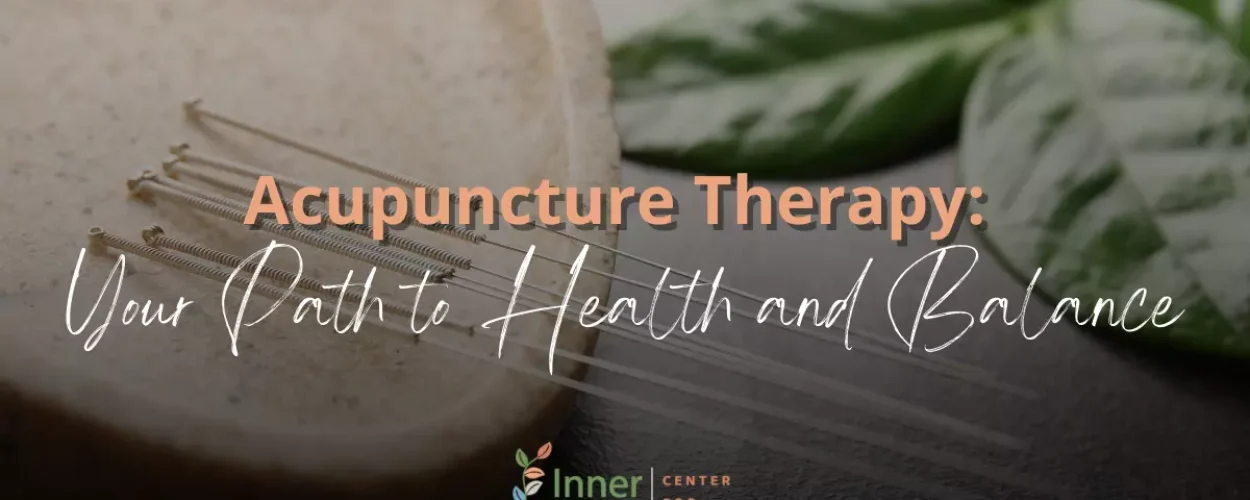Acupuncture stimulates specific points in the body to promote natural healing and restore balance through the use of fine needles. The unique nature of acupuncture treatment reawakes your body’s inner harmony and nurtures its natural healing capabilities. If you seek a path to wellness that goes beyond conventional treatments, this is the gem you’re looking for.
This gentle yet powerful method can provide relief from various ailments. These include chronic pain, menstrual cramps, neck pain, and more. If you are ready to unlock the door to a healthier, more balanced you, continue reading to learn more.
What is Acupuncture Therapy and How Did It Start?
Acupuncture is a form of traditional Chinese medicine (TMC) that involves inserting very thin needles at specific points on the body. This ancient practice has its roots in Chinese Medicine, dating back over 2,500 years. It is based on the belief that energy, or “Qi” (pronounced “chee”), flows along pathways in the body called meridians.
When the flow of this energy is blocked or unbalanced, it can lead to illness or discomfort. By inserting needles at specific points along these meridians, acupuncture aims to rebalance the energy flow. In the long run, it promotes healing and alleviates symptoms.
Historically, acupuncture has been used for a variety of conditions, including pain management, stress reduction, and to promote overall well-being. In contemporary times, it’s widely recognized and used worldwide. See it both as a standalone therapy and in conjunction with other medical treatments. Scientific research has begun to explore and validate some of its therapeutic benefits.
However, the mechanisms by which it works are not fully understood. But the procedure is generally considered safe and many people find it a relaxing and beneficial experience. Licensed acupuncturists with extensive training in traditional Chinese medicine and acupuncture techniques perform this method.
How Does Acupuncture Therapy Work?
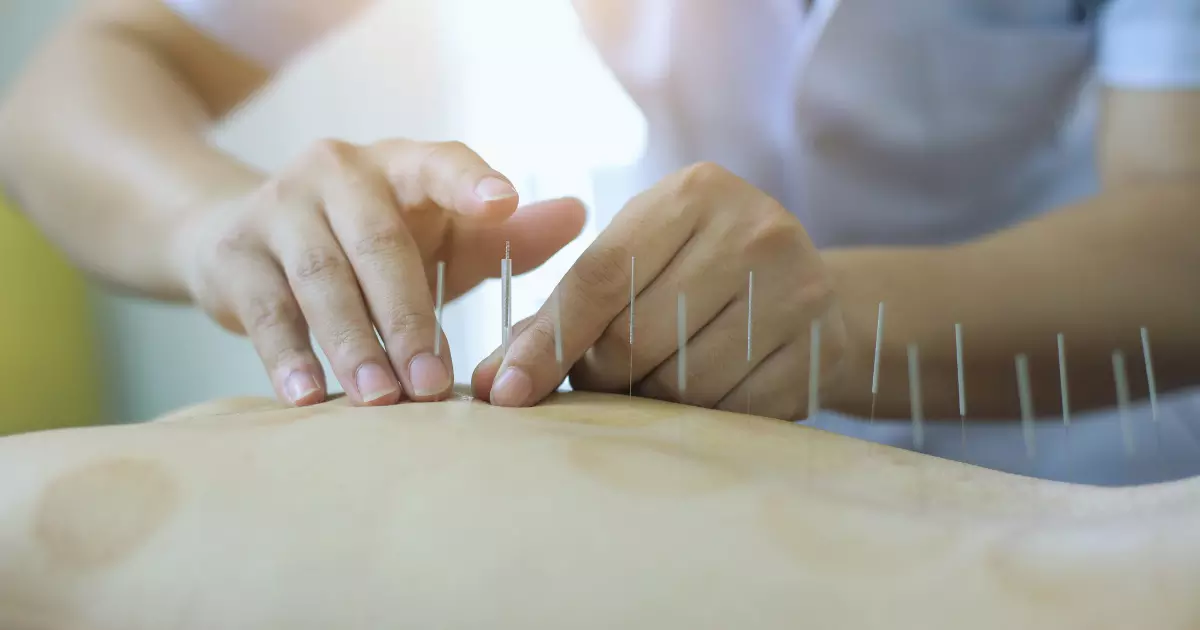
Acupuncture therapy is a fascinating blend of ancient wisdom and modern science. It aims to restore balance and health in your body. At its core, acupuncture works through a few fundamental concepts: Qi and Meridians, Yin and Yang Balance, Five Elements Theory, and Acupuncture Diagnosis.
Qi (Life Energy) and Meridians
Acupuncture revolves around the flow of energy, or Qi, through pathways in the body known as meridians. Think of these meridians as highways of energy that connect different parts of the body and ensure that Qi flows smoothly. Acupuncture needles serve as tools to unblock or stimulate these pathways. As a result, this method restores balance and relieves chronic pains.
Yin and Yang Balance
In Chinese Medicine, Yin and Yang represent the dual nature of all things. They are opposites but also complementary, existing in harmony. Acupuncture seeks to balance Yin and Yang in the body so that neither dominates the other. This balance is crucial for maintaining health and wellness and is a key aspect of acupuncture therapy.
Five Elements Theory
The Five Elements Theory is a Chinese Medicine principle that identifies five elements—Wood, Fire, Earth, Metal, and Water. It serves as a fundamental in understanding how the body works. Each element corresponds to specific organs and emotions. Acupuncture treatments often incorporate this theory. It uses specific acupuncture points to balance these elements in the body and address various health issues.
Diagnosis in Acupuncture
A qualified practitioner will perform a comprehensive diagnosis before starting acupuncture treatments. This involves a thorough assessment of your health history, lifestyle, and symptoms. The diagnosis helps the acupuncturist tailor the treatment to your unique needs. Acupuncture needles are placed at the correct points to address your health concerns effectively.
Chinese, Korean, and Japanese Acupuncture: What’s The Difference?
In the realm of acupuncture, there’s a rich tapestry of techniques and philosophies. Each is rooted in the tradition of harmonizing the body’s energy for optimal well-being. All three – Traditional Chinese, Japanese, and Korean Acupuncture – share the fundamental belief in the flow of energy through the body. They have unique approaches and nuances that set them apart.
Traditional Chinese Acupuncture is a holistic healing practice deeply rooted in ancient Chinese medicine. It operates on the principle that the body’s vital energy flows through a network of meridians. When there is a disruption or imbalance in this energy, it can lead to various health issues.
Acupuncture practitioners insert ultra-thin, sterile needles into specific acupoints along these meridians to restore the harmonious flow of Qi. Acupuncture stimulates these points to release natural painkillers and reduce inflammation. This improves blood circulation and promotes the body’s innate capacity for self-healing.
Japanese Acupuncture, like its Chinese counterpart, is a holistic healing practice. However, it uses more gentle needling techniques and precise shallow needle insertion. What sets Japanese Acupuncture apart is its subtlety and reliance on palpation to locate precise treatment points.
Practitioners often use thinner needles and insert them with minimal discomfort. Japanese Acupuncture also includes non-insertive techniques, such as moxibustion and palpation-based treatments, adding a layer of versatility. The gentle approach to harmonizing the body’s energy flow aims to alleviate a wide range of physical and emotional conditions.
Read also: Top 7 Acupuncture Tools and Techniques: A Deep Dive
Another part of Asian Medicine is Korean Acupuncture. It is a distinctive branch of acupuncture therapy that embraces innovative techniques and principles rooted in ancient Korean wisdom. One of its notable approaches is “Sujok,” where practitioners stimulate specific points on the hands and feet. This technique corresponds to the entire body and addresses ailments in a microcosmic manner.
Korean Acupuncture is also known as “Sa-am Acupuncture”, a three-needle technique that addresses imbalances in a comprehensive manner. Moreover, this acupuncture style incorporates “Korean Hand Acupuncture.” It utilizes detailed hand maps to diagnose and treat health issues effectively. Combining all these specialized methods promotes overall well-being. It is a revered practice in the realm of acupuncture therapy.
To help you understand the differences better, here’s a simplified breakdown:
| Aspect | Chinese Acupuncture | Japanese Acupuncture | Korean Acupuncture |
| Needle Type | Standard length and thickness | Thinner and shorter needles | Various techniques and needle types |
| Approach | Meridian-based, focusing on Qi | Emphasizes palpation and touch | Uses hand and foot points, unique methods |
| Additional Techniques | Cupping, Tui Na, Gua Sha | Moxibustion, minimal needling | Sujok, Sa-am, Korean Hand Acupuncture |
| Principles | Yin-Yang, Five Elements | Balance and Subtlely | Hand and Foot Correspondence |
Understanding these distinctions can help you choose the acupuncture style that resonates with your well-being journey. Whether you opt for the traditional depth of Chinese Acupuncture, the subtlety of Japanese Acupuncture, or the unique techniques of Korean Acupuncture, each path offers its own tapestry of healing experiences.
What are The Different Types of Acupuncture Techniques?
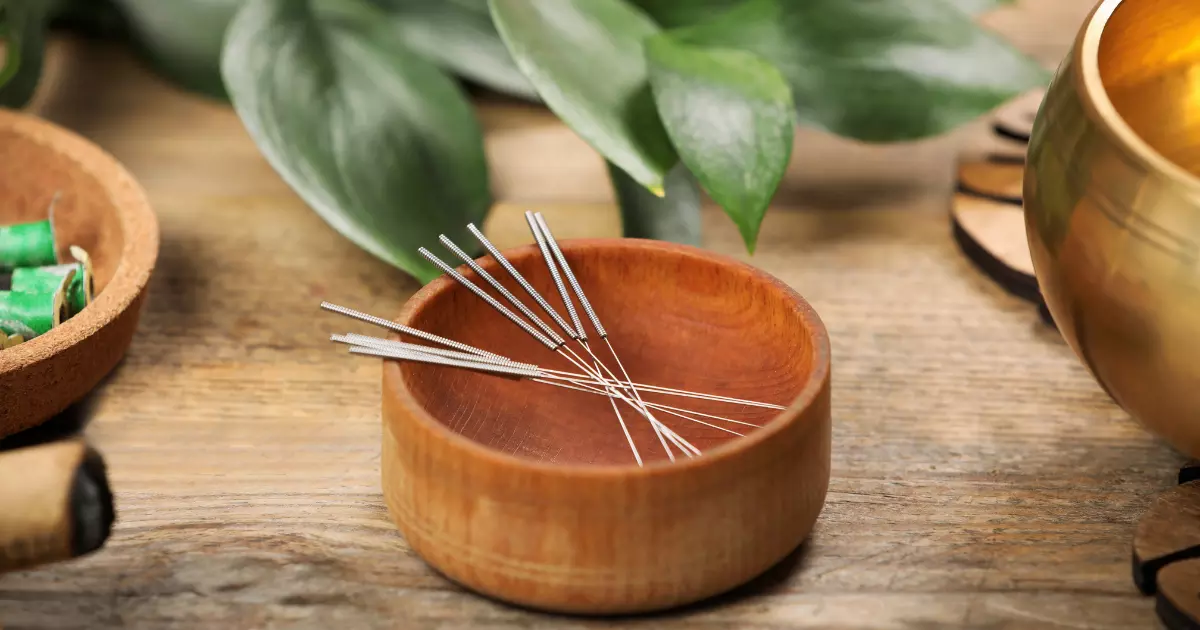
Many think of acupuncture as merely inserting sterile needles into specific points on the body. But there’s more to this art. When exploring the vast world of acupuncture therapy, you’ll realize that it’s not a one-size-fits-all practice. Different techniques have evolved over centuries. Each has its unique approach, specializations, and therapeutic effects. Here’s a glimpse into some of the most notable acupuncture styles:
1. Auricular (Ear) Acupuncture
Dr. Paul Nogier, a French neurologist and physician, discovered Auricular or Ear Acupuncture in 1950. This technique focuses on the ear as a microsystem of the body. By stimulating the specific points on the ear, it treats various clinical conditions and fosters a sense of well-being.
2. Electroacupuncture
Electroacupuncture is a modern twist on traditional acupuncture. It involves the application of a low electrical current to the needles to enhance the stimulation. Know its effectiveness in pain management and chronic conditions.
3. Moxibustion
Moxibustion is a warming technique that uses an herb called “mugwort” close to the skin’s surface. It involves burning the dried mugwort (moxa) to stimulate acupuncture points. By applying heat, it enhances blood circulation and promotes healing.
4. Cupping Therapy
This technique is famous for its distinctive circular marks. Cupping involves placing glass or silicone cups on the skin to create suction. It is renowned for relieving muscle tension, and joint pain, as well as improving blood flow.
5. Scalp Acupuncture
Scalp Acupuncture is a specialized technique that targets the scalp’s surface to treat a range of conditions. By inserting needles into specific scalp areas, it treats neurological disorders, headaches, and paralysis. It is known for its precision when it comes to dealing with head-related problems.
Read also: Glow from Within: Discover Facial Acupuncture Benefits for Youthful Skin
6. Acupressure
A cousin of acupuncture, acupressure applies pressure to acupuncture points using fingers or tools instead of needles. It provides relief from various ailments, such as stress and headaches. Acupressure is accessible for self-care which makes it a versatile and empowering technique. You can incorporate it into your daily routine for enhanced well-being.
7. Dry Needling
Dry needling is similar to acupuncture and is often used by physical therapists and healthcare providers. It specifically targets myofascial trigger points for pain relief and muscle tension. It is effective for musculoskeletal issues.
Read also: Dry Needling vs. Acupuncture: Which Is Best For You?
8. Five Element Acupuncture
Five Element Acupuncture aligns with the principles of Oriental medicine and integrates the Five Element theory. It seeks to balance the five elements: wood, fire, earth, metal, and water within the body. Through this approach, it addresses the emotional and spiritual aspects of health.
9. Sports Acupuncture
Sports Acupuncture is an alternative medicine tailored for athletes. Physical therapists trained in this type of acupuncture perform it. Sports acupuncture targets specific muscle groups and joints to enhance performance and expedite recovery. This type of real acupuncture is an effective treatment for managing sports-related injuries and improvement in pain intensity. It is a valuable tool in the world of sports medicine. That is especially beneficial for long-term pain relief, with no adverse effects.
Each of these acupuncture techniques has its own strengths and areas of specialization. They all offer diverse approaches to the art of energy balancing and healing. Choosing the right technique is a personalized journey. Your specific health needs and goals are the basis.
Here’s a table for a quick recap.
| Technique | Focus Area | Methods of Stimulation | Benefits |
| Auricular Acupuncture | Ear | Needles | Treats various clinical conditions |
| Electroacupuncture | General | Needles & Electrical medical devices | Enhances pain relief |
| Moxibustion | General | Heat from Mugwort | Promotes healing |
| Cupping Therapy | Skin & Muscles | Suction | Relieves muscle pain & tension |
| Scalp Acupuncture | Head | Needles | Treats neurological conditions & headaches |
| Acupressure | General | Hand Pressure | Relieves stress & headaches |
| Dry Needling | Muscles | Needles | Alleviates muscle pain & improves motion |
| Five Element Acupuncture | Internal Elements | Needles | Balances body’s five elements |
| Sports Acupuncture | Muscles & Joints | Needles | Enhances performance & recovery |
What are The Conditions that Acupuncture Therapy Treats?
Eastern medicine and Western Medicine widely accept and apply acupuncture. It seamlessly integrates with holistic health practices to provide comprehensive healing. Let’s delve into the benefits of acupuncture and the variety of conditions it can address.
Acupuncture for Pain Management
Acupuncture in pain management has gained recognition in Western medicine for its remarkable efficacy. Whether you’re grappling with chronic conditions, postoperative pain, or musculoskeletal pain, acupuncture offers a holistic approach to pain relief.
For instance, it excels in mitigating chronic pain conditions such as back pain, neck pain, joint osteoarthritis, and sciatica. It is also effective in treating different types of headaches. Examples are chronic headache disorders, migraine headache prophylaxis, and cervicogenic or tension-type headaches.
For those with musculoskeletal conditions, sports injuries, or even tennis elbow, acupuncture can promote the body’s natural healing processes. The therapy is effective in addressing connective tissue problems and improving blood flow. These contribute to reduced pain and enhanced mobility.
If you are suffering from myofascial pain, acupuncture can help you manage the pain. Acupuncture provides a non-invasive and drug-free alternative to this condition. Its approach to myofascial pain involves needling specific points to release tension, offering relief and a renewed sense of comfort.
Acupuncture for Stress and Anxiety
Acupuncture sessions are a perfect retreat for those facing stress. The practice of acupuncture lowers stress hormones and improves mood to alleviate stress. During the sessions, tiny disposable needles are placed on specific points related to stress relief, such as the ear or wrist. Electrical stimulation might be added to enhance the effects.
For anxiety, acupuncture takes a more targeted approach. That is why real acupuncture methods are highly beneficial for people with panic attacks. Acupuncturists focus on points to regulate the brain’s fight or flight response and rest and digest state. This technique helps alleviate anxiety symptoms. Many clinical trials and scientific evidence showed a significant reduction in anxiety levels for acupuncture patients.
Read also: CBD & Acupuncture for Anxiety, Pain, Autoimmune, Cancer
Acupuncture for Mental Health
The positive effects of acupuncture for mental health are vital in maintaining a healthy mind. It is an alternative therapy that targets specific points in the body to balance energy flow. Through stimulation, it releases the natural feel-good chemicals (endorphins) in the muscles, spinal cord, and brain. Acupuncture also reduces the symptoms of peripheral neuropathy.
Acupuncturists use two different styles of acupuncture to address mental health: ear acupuncture and battlefield acupuncture. They offer unique approaches to managing mental health conditions. Ear acupuncture targets areas of the brain related to stress and anxiety. Battlefield acupuncture from the military uses specific points in the ear to help veterans manage post-traumatic stress disorder and anxiety.
Read also: Acupuncture Treatments for Addiction
Generally, the practice of acupuncture is a safe and effective way to support mental health. With the use of disposable needles and adherence to safety protocols, the risks of acupuncture are minimal. However, it is essential to consult with a certified acupuncturist or mental health care provider before starting any acupuncture services. It ensures that acupuncture will not affect the standard treatment for mental health.
Whether you’re a veteran struggling with PTSD, a breast cancer survivor dealing with anxiety, or anyone in between, acupuncture is the key to unlocking a balanced and harmonious mind. So, explore acupuncture benefits today and take the first step towards a healthier, happier you.
Acupuncture for Digestive Disorders
The effectiveness of acupuncture for digestive health is notable. Real acupuncture alleviates a range of digestive issues. Examples are indigestion, irritable bowel syndrome (IBS), acid reflux, and gastritis. Aside from these, it also helps rebalance the digestive system, reduce inflammation, and improve overall gut health. If you’re experiencing digestive discomfort, consulting a licensed acupuncture practitioner can provide valuable insights and a personalized acupuncture treatment plan.
Acupuncture for Respiratory Disorders
If you’re looking for intervention in asthma or other respiratory disorders, acupuncture is a good addition to your conventional therapies. Medical acupuncture has the ability to improve lung function without adverse effects on your respiratory health. Acupuncture helps relax and dilate the airways. These make it easier for individuals with conditions such as asthma to breathe. This can reduce the frequency and severity of asthma attacks.
Acupuncture for Weight Loss Management
Acupuncture therapy for weight loss involves two primary styles: medical acupuncture and traditional Chinese medicine acupuncture. Medical acupuncture often incorporates standard treatment and conventional therapies alongside acupuncture. It focuses on a more scientific approach to weight loss. This approach utilizes mechanisms of acupuncture to stimulate certain body areas for appetite control, metabolism boost, and stress reduction.
Read also: How Holistic Healthcare Helps You Lose Weight The Right Way
On the other hand, traditional Chinese medicine acupuncture leans more on the holistic side. Acupuncturists tap into the body’s meridian points to restore balance, improve energy flow, and support weight loss. This style of acupuncture is deeply rooted in the principles of Chinese medicine and involves a comprehensive approach. It considers the individual’s unique energy patterns, emotional well-being, and overall health.
Acupuncture for Gynecological and Reproductive Health
The effects of acupuncture offer valuable support for gynecological and reproductive health by leveraging its unique healing mechanisms. Women dealing with various concerns, from menstrual irregularities and fertility issues to menopausal symptoms, can consider acupuncture. It serves as a gentle, holistic, and effective solution.
People with breast cancer can also benefit from the effectiveness of acupuncture treatment and its therapeutic effects. Senior citizens looking for interventions for osteoarthritis can enjoy its anti-inflammatory and anti-hyperalgesic effects.
Read also: The Benefits of Acupuncture During Your Menstrual Cycle
By stimulating specific acupoints, it regulates menstrual cycles, improves blood flow to the reproductive organs, and balances hormonal fluctuations. The characteristics of acupuncture treatment to reduce stress and promote relaxation are particularly advantageous in gynecological health.
With standard care, it can alleviate conditions such as polycystic ovarian syndrome (PCOS) and endometriosis that stress can exacerbate. Additionally, it can enhance fertility outcomes, providing hope to those on their journey to conceive. By addressing the root causes of reproductive issues, acupuncture contributes to overall well-being, fostering harmony in this essential aspect of women’s health.
How Does Acupuncture Therapy Align with Modern Medicine?
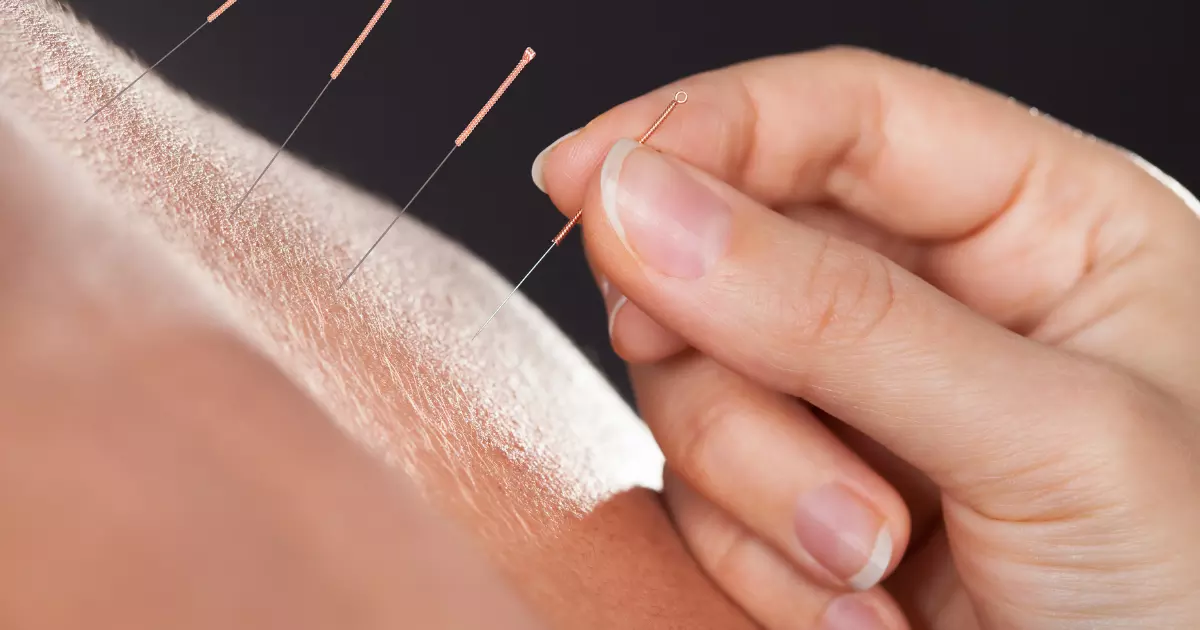
Acupuncture therapy has emerged as a powerful ally in modern medicine. Its unique methodologies and mechanisms stand distinct from conventional therapies. The focus is on restoring balance to the body’s energy flow and facilitating natural healing. By targeting specific acupuncture points, this alternative therapy aims to alleviate a myriad of health concerns. It offers a complementary option to standard care.
It contrasts with sham acupuncture, which involves non-specific needle placement. Certified nonphysician acupuncturists or medical professionals with acupuncture training perform authentic acupuncture therapy. These specialists utilize their comprehensive understanding of acupuncture clinical practices to tailor treatments to individual needs. Through the strategic insertion of thin needles at specific points, acupuncture therapy can deliver long-term pain relief.
It also mitigates symptoms of various conditions like joint pain, postoperative pain, and musculoskeletal pain. This ancient method also provides comfort for breast cancer patients. It also prevents hot flashes in breast cancer survivors. Moreover, the efficacy of acupuncture has an ongoing exploration through clinical trials and rigorous research. This is to further validate its place in modern healthcare as well as understand its benefits and mechanisms.
In essence, acupuncture therapy stands as a viable alternative medicine option. It harmoniously coexists with modern medical practices. The outcome is a holistic, patient-centered approach to health and wellness. By choosing acupuncture, individuals embark on a unique health journey. It addresses their physical ailments and also fosters a sense of balance and harmony within.
What is Acupuncture for Children?
Acupuncture for children is a tender, safe, and effective healing method. Unlike adult treatments, pediatric acupuncture involves thin needles and sometimes, no needles at all! Acupressure, a needle-free technique, is for younger patients. Pediatric acupuncturists focus on specific points in the body to balance energy, boost immunity, and alleviate discomfort.
Common Pediatric Conditions Treated with Acupuncture
Acupuncture is a lifesaver for children dealing with various health challenges. Here’s a sneak peek at some conditions that respond well to this therapy:
- Bedwetting. Acupuncture can help the body learn to control bladder function.
- Allergies. It’s like a superhero shield against sneezing and itching.
- Digestive Troubles. Whether it’s tummy aches or constipation, acupuncture can lend a helping hand.
- Asthma. It opens up the airways, making breathing easier.
- Anxiety and Stress. Even our little ones can feel overwhelmed. Acupuncture can soothe those jitters.
What is Acupuncture for Seniors?
Acupuncture for seniors offers a gentle and effective path to enhanced well-being in the golden years. This holistic therapy caters to the unique needs of older individuals. It addresses concerns like chronic pain, joint stiffness, and age-related health issues. The safety of acupuncture alleviates pain conditions and musculoskeletal discomfort. Contribute to long-term relief and improved mobility.
The effectiveness of acupuncture also addresses age-related concerns such as osteoarthritis. It provides an alternative medicine that aligns with senior health principles. This makes it a valuable option for seniors looking for intervention in asthma. By collaborating with a qualified acupuncture practitioner, seniors can explore safe and effective approaches to maintaining their health and vitality.
What is Acupuncture for Athletes?
Acupuncture for athletes is a game-changer. Expect a holistic approach to enhancing performance and promoting recovery. Whether you’re a seasoned pro or passionate about your sport, acupuncture is your secret weapon. It aids in pain relief, addresses musculoskeletal conditions, and even improves athletic recovery. With scientific evidence backing its efficacy, acupuncture has gained recognition as a safe and non-invasive complementary therapy for athletes.
Its therapeutic effects include anti-inflammatory and pain-relieving properties. These make it invaluable in managing post-workout soreness or sports-related injuries. Whether you’re looking for that extra edge in your performance or a natural way to stay at the top of your game, acupuncture is a compelling choice for athletes. It offers a unique synergy between alternative medicine and athletic goals. As a result, it allows you to push your boundaries while caring for your body.
What to Expect During Your Acupuncture Session?
Go deep into the world of acupuncture therapy. It’s crucial to understand what goes on during sessions. This section will walk you through what to expect in the acupuncture clinic.
1. Warm Welcome and Consultation
Your acupuncture journey begins with a friendly welcome. A practitioner will sit down with you to discuss your health concerns. An acupuncturist will ask questions about your medical history and specific symptoms to tailor your session.
2. Tailored Treatment Plan
Based on your consultation, your acupuncturist crafts a tailored treatment plan. Whether you’re seeking relief from musculoskeletal pain, tension-type headaches, or postoperative discomfort, your session is uniquely designed for you.
3. Needle Insertion with Expert Precision
Tiny, sterile needles are gently inserted into specific acupuncture points. Don’t worry because the sensation is often a mild, momentary pinch. The needles work to unblock energy pathways, promoting natural healing.
4. Deep Relaxation and Restoration
Once the needles are in place, you relax in a peaceful environment. Many patients find this period deeply calming. Experience a sense of mental and physical restoration.
5. Open Communication
During the session, you should communicate with your acupuncturist if you feel any discomfort. Your feedback is invaluable leading to adjustments for your next session.
6. Post-Session Wellness
After the session, you might feel an immediate sense of relief or gradual improvements. Acupuncture’s therapeutic effects extend beyond the session. Feel ongoing relief and enhanced well-being.
What are The Safety and Regulatory Considerations for Acupuncture Therapy?
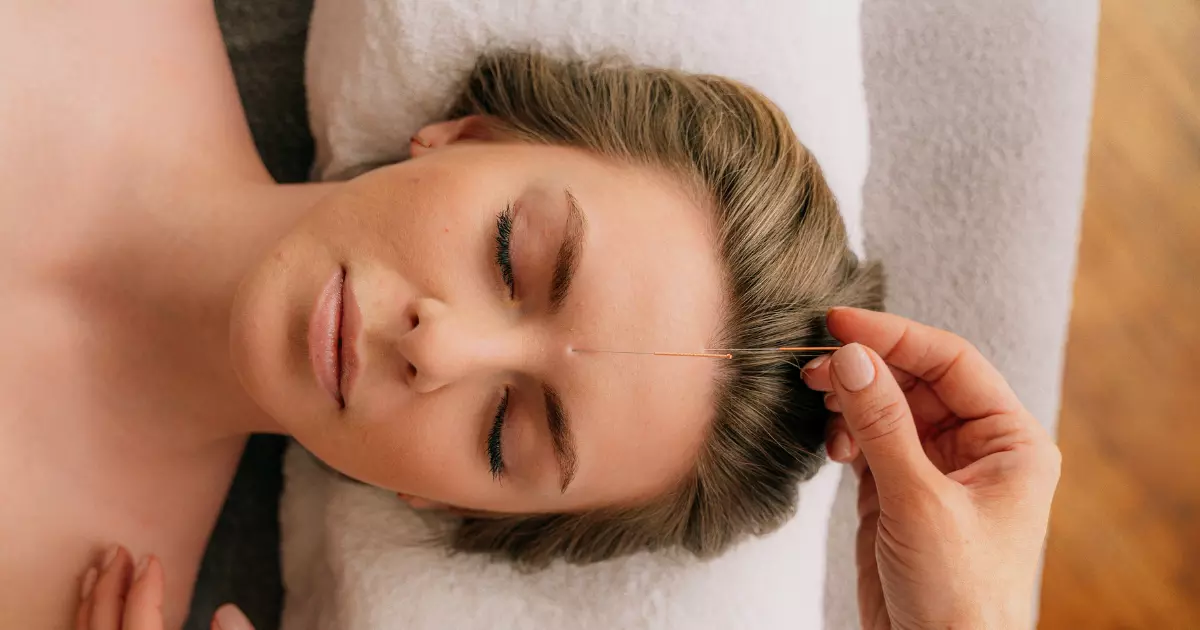
When it comes to acupuncture therapy, ensuring your safety is paramount. Here’s what you need to know about safety and regulations in the world of acupuncture.
Licensing and Certification of Acupuncturists
You should always look for licensed or certified acupuncturists to ensure you’re getting safe and effective treatment. This process involves rigorous training and assessment. Trust in the expertise of your practitioner. They have a deep understanding of acupuncture’s efficacy and safety.
Sterilization and Cleanliness
Cleanliness is a fundamental aspect of acupuncture. To prevent infection, all equipment and needles are single-use and disposable. Your preferred acupuncture clinic must have a clean treatment environment. The clinic should also follow the highest standards of sterilization.
Common Risks and Side Effects
While acupuncture is generally safe, it’s essential to know the potential side effects. These are minimal and may include slight bruising or mild discomfort at the needle insertion points. These effects are short-lived and don’t overshadow the therapy’s benefits.
Patient Safety Protocols
Your safety is a shared responsibility. Open communication about your medical history and any concerns is encouraged. Acupuncturists are trained to create a safe and welcoming space. Have a smooth and secure journey to improved health.
What Are The Future Trends and Innovations in Acupuncture Therapy?
The world of acupuncture therapy is evolving. It embraces innovative trends that blend ancient wisdom with cutting-edge technologies. The future holds promising possibilities. It’s not the only treatment. It’s a dynamic field, constantly adapting to meet the diverse needs of patients.
Integrative Therapies and Multidisciplinary Approaches
Acupuncture is increasingly becoming part of integrated healthcare systems. Collaboration between acupuncturists, medical doctors, and specialists results in comprehensive treatments. Patients benefit from a synergy of therapies, enhancing the overall healing experience.
Technological Advancements
From laser acupuncture to electroacupuncture devices, technology is revolutionizing treatments. These innovations provide non-invasive and painless alternatives. Make acupuncture accessible to a broader audience. Wearable devices that stimulate acupuncture points are also on the rise. It enables continuous healing outside the clinic.
Personalized Acupuncture Protocols
Advancements in genetic research enable tailored acupuncture protocols based on individual genetic markers. Personalized treatments optimize efficacy. It also ensures that each session aligns perfectly with the patient’s unique needs and physiology.
Research and Evidence-Based Practice
Ongoing research from organizations like the National Cancer Institute and the National Center for Complementary and Integrative Health fuels evidence-based acupuncture. Clinical trials explore acupuncture’s effectiveness in treating various conditions. All these studies enhance its credibility in the medical community and provide additional improvement.
Mind-Body Techniques Integration
Acupuncture, when combined with mindfulness practices like meditation and yoga, amplifies therapeutic effects. These holistic approaches synergize mental and physical healing. It empowers individuals to actively participate in their well-being journey.
Acupuncture Therapy at Inner Ocean Center for Healing
Acupuncture therapy is a holistic approach that combines the wisdom of Chinese Medicine with modern research. Numerous clinical studies have confirmed the efficacy of acupuncture for various conditions. That is from neck pain and dental pain to more complex health issues. Whether you are seeking an alternative to conventional treatments or a complementary therapy to enhance your overall health care, acupuncture provides a safe, effective, and natural path to wellness.
At Inner Ocean Center for Healing, we’re here to guide you on this journey to well-being. Our skilled acupuncturists are ready to help you experience the transformative power of acupuncture therapy. Take the first step towards a healthier, more balanced life. Book your acupuncture session today and unlock the full potential of your health. Your path to health and balance awaits.

